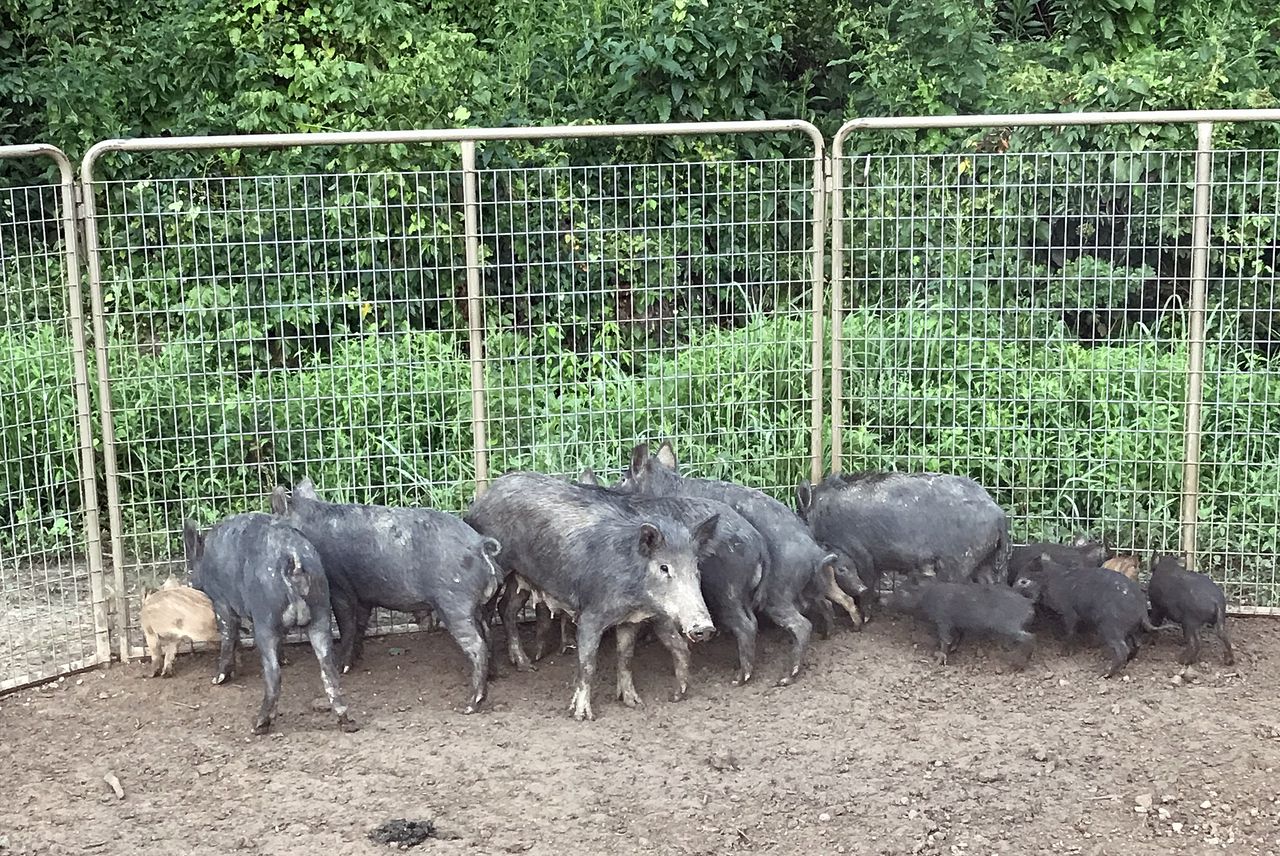New front in the war on feral hogs? Texas prof says poison proving effective
Texas wildlife authorities are testing a new way of controlling feral hogs via poisoned bait that they say could be a game-changer in mitigating the millions of dollars in damages that wild pigs cause every year.
Texas A&M associate professor and extension wildlife specialist John Tomeček and Michael Bodenchuk, director of Texas Wildlife Services, recently concluded a two-year study testing a warfarin-based poison bait product at 23 locations in 10 counties across the Lone Star State.
Tomeček told AL.com that his results showed the bait was an effective tool when applied as instructed.
“In places where people used it correctly, they were able to kill all of the pigs that we were able to see on camera,” he said. “So we didn’t have any pigs left on some of those places at the end of the application. Or at the end of the year of using the product, even though they still had pigs, the numbers were far fewer and the damages were far less.”
Mark Smith, a professor at Auburn University and specialist with the Alabama Cooperative Extension System who specializes in feral hog research and control, said wildlife officials in Alabama are watching the study closely.
“I think John’s study will be important to see the results,” said Smith, “to figure out if that’s going to be possible here in Alabama at some point in time.”
He said additional study would have to be done on poetntial harm to non-target species before the product would be approved for use in Alabama.
“Black bears are just like giant raccoons, they can get into anything,” Smith said. “Based on what we know about feeding behaviors, black bears will just sit there and eat and eat and eat so a very toxic bait is probably going to kill them deader than a doornail.”
READ MORE: Bullets alone can’t solve Alabama’s feral hog problem
Tomeček said the bait stations are designed to prevent non-target animals from reaching the poisoned bait. He said landowners have to train the hogs to get food from the stations before the poison is added.
“The feeder device requires a pig to essentially stick its head under a metal bar and lift the metal bar to open the door,” he said. “And pigs are quite capable of doing this but you’ve got to get them used to eating out of the feeder and then slowly close that door little by little to where they’re used to opening it up to get food.”
Then, a pig has to feed there for 5-6 days in order to ingest enough poison to be fatal, meaning the landowner has to make sure the trap is baited consistently to get as many hogs as possible.
“It’s not a one time feeding kind of item,” Tomeček said.
The full results of the Texas study have not been made public or published in a scientific journal. Tomeček said the study was conducted at the request of the Texas state legislature to evaluate whether the product should be approved for use.
“We’re waiting for our legislators and our Department of Agriculture to digest those results because we conducted this study for their benefit,” Tomeček said. “At some point I suspect we’ll be publishing all that but we just don’t have it out yet.”
The product, marketed under the name Kaput, was given initial clearance by the U.S. Environmental Protection Agency for use as a pesticide, allowing further testing, but individual states must also grant a registration to use the product.
Feral hogs, a growing problem across the southeast, can somewhat be controlled by capturing them in fenced traps like this one.
Smith at Auburn said that wild pigs cause at least $50 million in agricultural damages every year in Alabama, not to mention damage to other property, roads, lawns, and wild streams.
“Peanut farmers down in the southeast part of the state really take a hit in terms of pig damage,” Smith said. “Some of the corn and bean producers on western side of the state as well.”
Smith said that streams where large numbers of feral swine have shown elevated levels of E. coli bacteria that can make people sick if they come in contact with it.
“It’s just not a farmer problem or forest landowner problem,” he said. “It really becomes a human health problem when you look at it from the standpoint of water quality.”
READ MORE: Wild hogs wreaking havoc on Alabama wildlife
The new option isn’t easy, but it is easier than some other hog control methods, such as shooting hogs with shotguns from helicopters.
“We do have some properties that are several hundred square miles in size, and so the only way to [hunt pigs] efficiently is with aerial shooting,” Tomeček said.
In Alabama, trapping is a more common option, and the Alabama Feral Swine Control Program offers landowners a 70% rebate up to $12,000 for hog traps and other eligible equipment.
Smith said that the poisoned bait products might be a good option down the road once more studies are conducted.
“I don’t know where it’s going to go, but I think things are fixing to get interesting here in Alabama, certainly, based on the Texas study,” Smith said.
